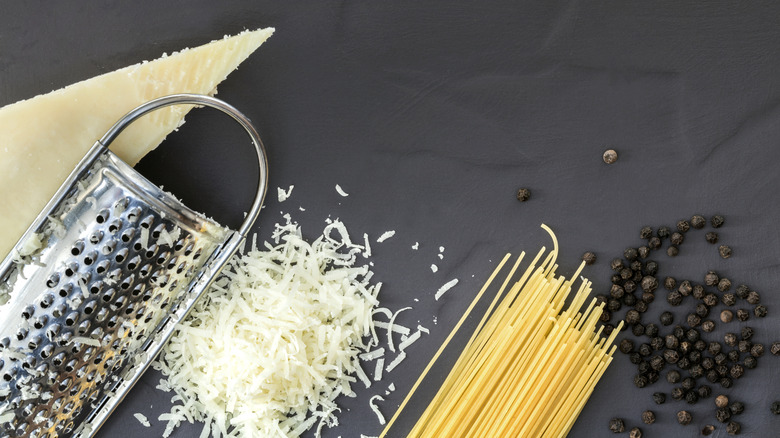The Roman-Inspired Ingredients Ina Garten Adds To Her Scrambled Eggs
Scrambled eggs are one breakfast food that Ina Garten appears to be very fond of. Based on the recipes she has included in her cookbooks and featured on her television shows, she appears to have an affinity for French-style, soft, custardy scrambled eggs. Fans have seen her create them with truffle butter and chives, with goat cheese, and flavored with soft green herbs. One of Garten's famous friends, Jennifer Garner, actually whipped up a batch of Garten's Roman-inspired scrambled eggs on Instagram, with the Barefoot Contessa herself standing close by. The secret to these incredible-looking eggs is lots of Pecorino Romano cheese and black pepper, the same ingredients that go into cacio e pepe pasta.
With Garner at the helm, in charge of the eggs, Garten kindly guides Garner through the steps, reminding her that these eggs cook over very low heat (not cranked up, as Garner initially instructed viewers). Although the video is supposed to be hosted by Garner, Garten largely takes over the segment, adding salt and pepper to the eggs and telling viewers that patience is key to creating the right texture in the recipe. The grated Pecorino is added to the eggs when they start to become creamy and set. There is a lot of stirring involved, and timing is everything, which is very similar to the way cacio e pepe pasta is made, although these eggs aren't nearly as deceptively difficult as the pasta dish is.
The flavors of cacio e pepe are great in several dishes
Cacio e pepe pasta is an incredible dish because it only involves a few ingredients, but results in a huge amount of flavor. The sharpness and saltiness of Pecorino Romano cheese and the spice of cracked pepper are contrasting flavors, but they also complement each other. This is why they work so well together in scrambled eggs. But you can transform much more than just eggs into a cacio e pepe flavor haven.
For starters, many pasta dishes will work with a cacio e pepe spin. For macaroni and cheese, you'll need a cheese that melts well into the dish (Pecorino Romano is hard and is not a melting cheese). Pecorino Toscano is a great choice, but you can easily use a mixture of cheeses, too, like white cheddar, Fontina, and Taleggio — just incorporate the Pecorino Romano as well. Gnocchi and risotto can also be flavored like cacio e pepe.
Mix Pecorino Romano and black pepper into breads, biscuits, and even waffles (which would taste fantastic with Ina's scrambled eggs on top). Grilled cheese sandwiches and garlic bread would also taste wonderful with the cheese and pepper. You can roast asparagus, broccoli, or cauliflower and shower the veggies with cheese and pepper as soon as they come out of the oven. Try transforming your normal elote corn into a Roman-inspired treat by mixing some mayonnaise with plenty of Pecorino cheese and slathering it on grilled corn. Grind some black pepper over the whole cob before diving in.

